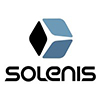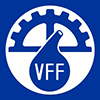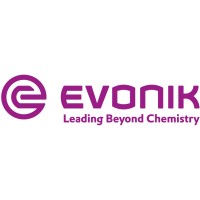-
Water-intensive industrial operations rely on Solenis to provide the water treatment solutions they need to address most, if not all, of the challenges that raw water, utility water and wastewater present, ensuring the optimal quality and use of water.
-
Tray design features that reduce turnaround maintenance time
Column shutdowns can be costly. Production is halted and maintenance expenses accumulate without any offsetting revenue. Maintenance crews need to isolate, open, inspect, modify, repair, and close columns, all under pressure to complete work as expeditiously as possible. Minimization of shutdown costs begins during the equipment design phase. Sulzer incorporates several features into our tray designs that can reduce column shutdown time. Tray Replacement and Installation Tray ...
-
VSP®-V High performance tower packing with lowest pressure drop
The VSP-V is the updated version of VFF’s world wide known random packing VSP. The VSP-V offers high performance in plastic with top mass transfer and lowest pressure drop and is easy to handle during column loading and emptying.
-
MD FCC Catalysts - boosting middle distillates production in FCC
Maximizing middle distillates in FCC units. A range of catalysts is available from Ketjen for increasing the production of middle distillates in the FCC process while retaining the many other attractive features of this versatile bottom-of-the-barrel upgrading process. The key to success is to adjust the catalyst properties for maximum production of LCO while maintaining maximum bottoms (slurry oil) destruction and good product quality. The middle distillate catalyst family ...
-
Measurement solutions for the Refining Industry
Berthold Technologies radiometric instruments for non-contacting level and density measurement are widely used in the global oil refining industry. Among our customers are well-known companies like Exxon Mobil, Sinopec, Shell, BP, Conoco Phillips, Lukoil and Total – just to name a few. Our measurement solutions, utilizing gamma absorption technology, assist our customers in achieving reliable process control. This ensures safe operations, maximizes efficiency, and ultimately ...
-
Maximizing alkylation feed, transportation fuels and octane Taking advantage of new zeolite technology. The chances are that maximizing transportation fuels (gasoline plus diesel/light cycle oil) and alkylation feed while raising the octane level of the gasoline produced in your FCC unit is high on your agenda. Octane has become a key issue for many refiners with the advent of tight oil resulting in the production of more-efficient car engines, the almost worldwide ban on the ...
-
InlineSENS - Density Measuring Cell
Density and concentration measurement with low energy gamma radiation. The InlineSENS combines both a radiation source and scintillation detector in one device. Its use of low-energy gamma radiation from an Am-241 or Cm-244 source provides for strong responses to even the slightest change in product composition , with extremely low dose rates. Features for high demands The isotope Am-241 or Cm-244 is used as the radiation source. The advantage: Am-241 and Cm-244 have very ...
-
SENSseries LB 480 compact field device
SENSseries LB 480 level measurement is particularly suited for demanding measuring tasks in safety-related applications. This line offers detectors certified for use in SIL 2 systems. Berthold is the first manufacturer of SIL certified radiometric level, level switch (min./max. alarm) and density measurement systems. SIL 3 can be achieved with the redundant installation of two LB 480 SIL 2 systems.
-
Will revolutionize turnaround operations and operational excellence by optimizing: productivity, operability, safety health and environment, reliability, product quality, energy efficiency, CO2 SOX NOX VOC emissions, maintenance and repair and operational requirements. An entire Unit can be ITW Online Cleaned in as low as 24 hours on an oil-to-oil basis, including all the equipment and not only the relevant one, without the need of opening it. ITW Online Cleaning a Unit in ...
-
Wet gas sulfuric acid - profitable sulfur management
The WSA technology is an excellent alternative to the Claus technology for sulfur management within oil refining, coal gasification, gas sweetening etc. High steam production, feed flexibility, ease of operation, and low CAPEX & OPEX are some key benefits for the operator when selecting the WSA technology. Today we have +130 references world wide.
-
Sulzer Chemtech is the world‘s most renowned supplier of equipment and related solutions in the field of static mixing. The combination of engineering expertise and many years of application know-how enables Sulzer Chemtech to provide global solutions for improved polymer product quality. All Sulzer Chemtech products and services rely on a successful integration of three main competencies: • Static mixing know-how • Piloting & scale up • Process & ...
-
Innovative solutions and measurable results from Solenis
For more than 100 years, Solenis has been dedicated to helping refineries operate more efficiently and profitably. Achieving these goals requires innovative chemistries, advanced monitoring and control systems, and expert support.
-
Optimal monitoring of separation processes
Monitoring interfaces or multiple layers in process vessels poses some challenges for the measurement technologies. Where other measuring methods fail and cannot withstand extreme process conditions, radiometric measuring systems can provide reliable results. Berthold’s radiometric measurement systems are used to monitor interfaces or multiple layers in process vessels. Thereby, not only the interfaces between two phases can be localized, but also the measurement of density ...
-
Optimizing the value of your unloaded catalyst
The metals contained in spent catalysts offer a valuable follow-on revenue source, but how can you be sure to achieve a fair settlement or receive top dollar? You also need to balance demands of sustainability and lowered environmental impact with ease of recovery and settlement. This webinar gives you an introduction to the precious and base metal management cycle in catalysts and specifically provides you with tips for ensuring a high quality and accurate precious metal settlement, ...
-
Unleash the potential of your Naphtha Steam Cracker
The global ethylene market grows at 3.0-3.5% annually, which amounts to 6-7 MM MTA increase in demand every year. Greater than 95% of ethylene is produced using steam cracking. The two of the main feedstocks for steam crackers are naphtha and ethane with each supplying >45% of all ethylene production. Ethane cracking tends to have lower Cash Cost of Production, supply is regional and insufficient to meet the global ethylene demand. Naphtha cracking has several disadvantages: ...
-
CDU desalter processing with interface control
In this webinar, you will find out how Tracerco’s advanced multi-phase nucleonic instrumentation can analyse desalter performance and improve crude blending capacity. Discover opportunities to: - Improve environmental impact, compliance and energy usage - Reduce unplanned trips and downtime - Optimise chemical dosing (demulsifiers/neutralisers) - Reduce overhead corrosion, as well as catalyst deactivation in FCC - Improve process control enabling data driven insights With ...
-
An introduction to Sinopec Hydrocracking Technologies
This webinar gives you an overview and understanding of hydrocracking and its applications, with an emphasis on technologies and catalysts developed by Sinopec and its research arm, Sinopec Fushun Research Institute of Petroleum and Petrochemicals (Sinopec FRIPP). You will first get an introduction to hydrocracking including feed processing and target output products. Commercial considerations include market share and reference installations such as 40 hydrocracking units designed ...
-
How turbomachinery can support decarbonization
With the hydrocarbon processing industry’s efforts to decarbonize, hydrogen and Carbon Capture Utilization and Storage (CCUS) have further moved into focus as viable alternatives for transforming existing energy markets. Both hydrogen and CO2 provide ample opportunities to be used in hydrocarbon processes either in molecular form or as feedstock. At the same time, the unique physical properties of both hydrogen and CO2 can make them a challenge for process equipment such as ...
-
Technologies to enhance Ethylene production
In this presentation, three technologies will be introduced. This first is swirling element radiant tube (SERTTM) technology for steam cracking furnaces. In this technology, you will find how heat transfer theory is applied to overcoming the challenges of cracking pyrolysis to meet targets. Successful commercial cases will demonstrate the technical advantages of SERTTM technology. Cracking furnaces with SERTTM technology have longer operating days, lower tube wall temperature ...
-
Steam Cracker recycle processing and product upgrade options
LPG and light naphtha generated in a refinery complex (from both straight-run and conversion units) are sent to the ethylene cracker as feedstock. There is more i-paraffin than n-paraffin in LPG and light naphtha generated from a hydrocracker and reformer, in particular, i-butane and i-pentane. When cracking i-paraffin and n-paraffin separately in an ethylene cracker, the yield of ethylene and propylene is different; n-paraffin can generate 20wt% of “ethylene + propylene + butadiene” ...
-
Advances in benzene derivatives production
Xylene and ethylbenzene are important benzene derivatives. In this presentation, you will learn about recent advances in the production process and catalysts of xylene and ethylbenzene. Xylene production is one of the most important aromatic producing processes. You will learn the details of process technology introduction and catalyst features of aromatics transalkylation developed by Sinopec, as well as the process strategies of raw material expansion, Inferior feed tolerance, ...
-
Deep catalytic cracking technology for maximizing the production of chemicals
Optimization of light olefins (including ethylene, propylene and butene) production has become one of the most competitive options for refiners in the transition. Compared with conventional FCC, FCC technologies which optimized propylene production are helping refiners to restructure their product configuration, from fuel to petrochemical production. You will learn some successful commercial cases, which are aimed to help refiners to select the most suitable and competitive ...
-
Decarbonization with hydrogen solutions
Demand for hydrogen is expected to increase up to ten-fold by 2050 when multiple industry reports predict 8-24% of the world's final energy demand will be supplied by hydrogen. Hydrogen has a unique ability to address and ˜hard-to-decarbonize' sectors including refining, chemicals, steel, heating, long-haul transport, and long-term power storage and all of which currently produce significant CO2 emissions. To achieve this, hydrogen must be produced with significantly lower carbon ...
-
Enabling circularity via plastics chemical recycling
Chemical recycling of plastics is an emerging route to supplement mechanical recycling since polymers can be converted into monomer form. As opposed to mechanical recycling, wherein the polymer properties degrade with each cycle, the monomers can be re-polymerized without any polymer property degradation. Petrochemical and refining operations of the future will include more plastics oil, obtained from chemical recycling, in the feedstock mix to establish circularity in the ...
-
Best Practice: Screening and QC testing of petroleum products and fuels
Screening and quality control of petroleum products and fuels can be a tedious and expensive process when performed utilizing traditional methods. Near-Infrared spectroscopy (NIRS) as described in ASTM Guidelines E1655, D8340, and D6122 is a much faster method providing results in just 30 seconds without any solvents and reagents needed. In fact, NIRS has become the preferred method of numerous producers to quickly quantify key parameters in petrofuels and petrochemicals ...
-
Understanding alarm management standards
Alarms are an essential layer of protection, enabling industrial facilities to avoid abnormal situations that may put people, the environment, and profits at risk. As such, numerous standards and guidelines exist that can assist organizations in designing, implementing and maintaining alarm systems that comply with regulations. ISA 18.2, EEMUA 191, IEC 62682, API 1167 — how should organizations select these standards and guidelines? How can they be put into practice? Join ...































